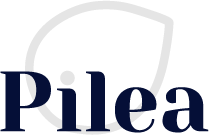Learnings from Open AI: Four things every leader should reflect on after the firing of Sam Altman.
The recent upheaval from the Open AI board in which board members voted to remove CEO Sam Altman from the company, has sparked analysis of their company and board structure, criticism of individuals on both sides and various opinions on who did the right thing along the way.
There are four key things, from a coaching perspective, to take from this conflict and reflect on in your own company or portfolio to prevent future conflict as well as some recommended actions to help you prevent misalignment.
1) Know thyself:
Some have speculated that part of the conflict with the board may have stemmed from a feeling that Altmans’ attention was too divided among his various other ventures outside of Open AI- a pattern he had displayed in the past. At Pilea, we screen for this pattern in diligence when we work with VC funds. A founder must have a clear understanding of their own strengths and patterns. Some folks are great in the 0-1 stage and struggle with the consistency in the growth stages, while others excel at scaling an organization with consistency and focus. Some can make the transition seamlessly! But, you have to know which type you are and be willing to account for that in your organizational structure. This is, of course, relevent for other patterns and tendencies. Founders without this self awareness run the risk or eroding trust with their board and their teams and may miss cues that there is a potential conflict up ahead. Stating your pattern and what you are doing to mitigate it clearly with your org. can go a long way in building trust and confidence in your leadership.
Do: Build self awareness for yourself and in your teams through coaching, 360 assessments, listening tours and regular shareback cadences to create intentional spaces for feedback and improvement. This gives leadership a clear view of possible hot spots and support in mitigating potential challenges before they result in an upset.
2) Have a clear shared mission, vision and values:
Take the time to define these three things clearly for yourself, your leadership team, your company and your board. Each of these is a little different in the way it informs company-wide decisions and orients the team in a common direction. For a company to be successful, these three things must be honest, transparent, adopted by everyone and revisited regularly to ensure they still fit where you are in your growth and development.
Do: Review your mission and vision with the team and your advisors anuallye. Consider translating your values into a set of active values to really make them tangible in your day to day work culture. You may even call a value in at team meetings and make space to discuss how they show up in peoples work and even their lives outside of work.
3) Balancing $$$ with ecological thinking:
In Open AI there was some sense that the mission of the non-profit board was at odds with the actions of the for-profit entity and the investors who funded it. This one might be the most complex for companies to navigate. AND it’s important to note that these things, in our view, are not mutually exclusive and can both be a goal of any great organization (going for that triple bottom line!). For our purposes, we define ecological as orienting towards the good of the people in an organization, self and others- and the environment, which may include anything from the literal office, to the org. culture, to society at large (as in the case of the board at OpenAI), to the wellbeing of the planet. While most companies don’t have the same organizational structure as OpenAI, every organization is faced with balancing these two things throughout its life.
It is all too easy, especially coming out of the existentially tenuous pre-product market fit phase, to overindex on things that have a clear line to profits. Having clear alignment around values, here can help to ensure that your pursuit of profit isn’t harming the integrity of your team, causing burnout or creating misalignment in your organization.
Do: Attending to the ecological concerns actually lead to better business outcomes by creating healthier cultures, better retention and more productive and creative collaboration. Knowing at which stage to pull which lever is the job of any great leadership team.
4) Be worth following:
When sh*t hit the fan, Sam's team, and the people who believed in him, were willing to follow him out the door. Create a culture where people feel that they are valued, important and part of something special. They must also know your vision and trust your integrity. When push comes to shove, they will withstand the ups and downs and weather through big learning experiences with you. Turnover isn’t cheap, supporting and nurturing great people is critical.
If you’re a leader in an organization, when was the last time you checked in on these things with your leadership team, with your company? How do you collaborate on working towards your shared goals together? Where are there areas of oversight or vagueness that could lead to future conflict? How does your team orient around your shared mission and live it out through the organization, do they feel valued and supported in their work and growth?
Want support? Reach out.

